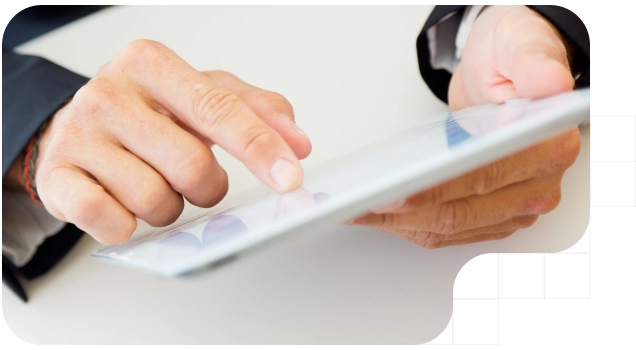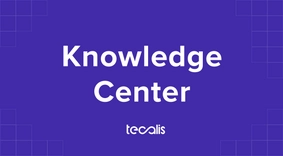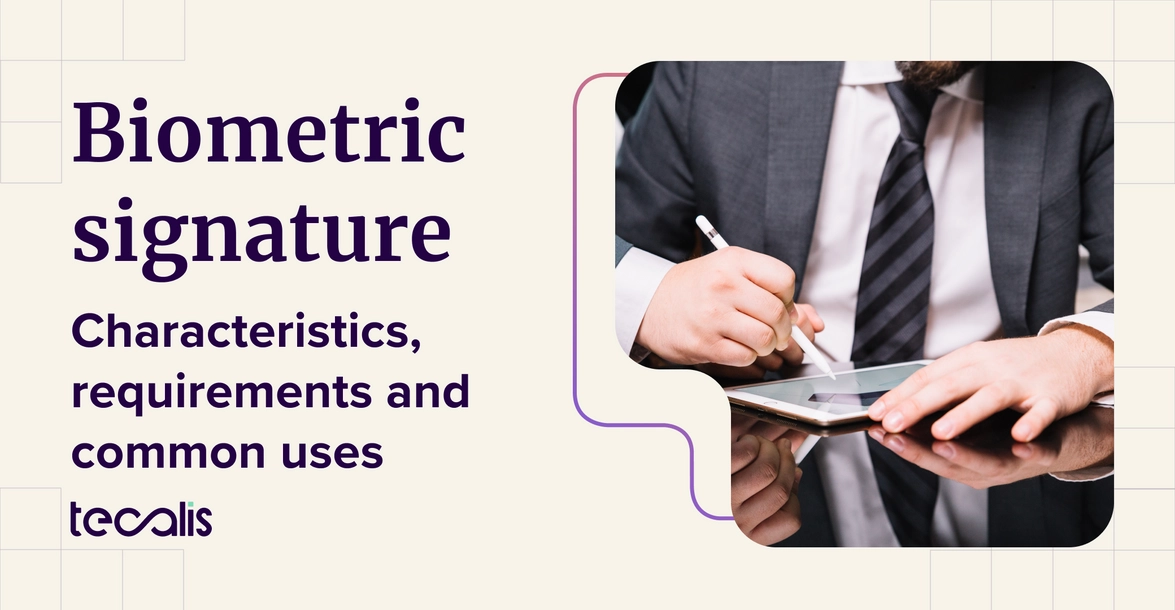Index
Get the latest news right in your inbox
Security, document authentication and high-risk digital transactions are made possible by biometric signatures. In this context, this solution emerges as a powerful tool to guarantee the integrity and authenticity of electronic signatures using biometric methods.
Document management is essential in any business, but some deal with more business-relevant documents and information that entails legal or compliance risk. This requires technologies with a higher level of security without sacrificing comfort and usability to interact with the digital world.
In this article, we will explain in detail what the biometric signature is, how it works, its requirements and characteristics, and why its use is increasingly relevant in various fields.
What is a biometric signature?
Biometric signature is a method of electronic signature that uses unique and inherent physical characteristics of an individual to authenticate his or her signature on electronic documents. These characteristics can include features such as face recognition, the way the graph is created by the hand, fingerprint, hand geometry, digitized handwritten signature, voice biometrics, and even iris scanning or behavioral or cognitive aspects. The essence of the biometric signature lies in its ability to uniquely link the signer's identity with the electronic signature, providing a high level of security and authentication.
In this way, the biometric signature goes beyond the simple traditional electronic signature. An irrefutable connection is created between the person and the signed document, strengthening security and trust in digital processes. All data are sealed and encrypted, preventing them from being modified a posteriori.
In most cases, biometric elements related to the writing of the graph are used. It is a really simple type of electronic signature for all types of users, since its use is practically the same as signing by handwriting on paper, but with all the associated biometric controls.
It is very important to bear in mind that a biometric signature is not the same as a digitized signature. The biometric signature collects in the signature process biometric data of the signer while the digitized signature is simply the digital transposition of a signature-graph from a format to an electronic document.

How handwritten biometric identification works
Biometric identification of the signer is based on the capture and analysis of the signer's unique physical characteristics. For example, in the case of signing electronic documents, a specialized device, such as a digitizer tablet, can be used to record the individual's handwritten signature based on their inherent behavior. This signature is then digitized and analyzed to identify unique patterns, such as pressure exerted, writing speed, and specific strokes.
In the biometric signature, grouped data is collected on the graphic information obtained in real time on the touchscreen mobile device when the user makes the signature. Among the dozens of data collected, the following stand out:
- Writing speed
- Acceleration in movements
- Number of strokes and behavioral logic
- Distance of elements and strokes
- Pressure (on compatible devices)
- Gesture dynamics
- Pre- and post-signing behaviors
All this data is encrypted locally on the device on which the signature is traced (Wacom, Topaz, mobile, tablet, etc). In an automated way, it is as if a handwriting expert analyzes every millisecond of the trajectory of the traces and the unique behavior of the signer.data are never in possession of the biometric signature platform or devices, only decryptable under judicial requirements and sealed with blockchain cryptographic technologies.
Also, all the information is stamped on the document with a validatable file. In many cases, the best biometric signature solutions also collect other data such as IP address metadata, geolocation, device information, traceability coordinates and other variables.
Another common method of biometric identification is face scanning using facial biometrics. In this case, a camera is used to capture an individual's unique face, which is then compared against a database to verify his or her identity.
There are several other biometric identification methods that can be used for electronic signatures, each with its own advantages and disadvantages. Some of the most popular methods include:
- Fingerprint: A method widely used for its practicality and security for quick transactions. The signer places his finger on a sensor that captures the fingerprint image and compares it with the information stored in the system.
- Face recognition: This method uses a camera to capture the image of the signer's face and compare it with a database of pre-recorded images. It provides a seamless and secure user experience.
- Iris: This is a highly secure method that uses a special scanner to capture the signer's iris image and compare it with the information stored in the system. It is ideal for high security environments.
- Voice biometrics: Used especially for remote operations and transactions performed via telephone. It includes dozens of controls and can be active, passive or both.
However, the laws of dozens of countries include the biometric signature standard with the data grouped on the graphic information we have seen previously. Something simple and 100% legally binding and with full legal backing.
The purpose of the data collection is to verify the identity of the signatory. These biometric data cannot be falsified or replicated, so they are perfect to guarantee the validity of the agreement or the information contained in the document. Biometric signature solutions and tools comply with data protection regulations such as the RGPD, so there are no risks in this regard and are endorsed by institutions and regulatory bodies.

Advanced electronic signature biometrics-based
Advanced electronic signature (AES) is a closely related but distinct concept from biometric signature. While biometric signature focuses on authenticating the signer through unique physical characteristics, AES refers to the use of advanced technologies, such as cryptography, to ensure the integrity and authenticity of an electronic document.
The biometric signature can be considered as a specific type of advanced electronic signature, since it uses biometric features to authenticate the signatory's signature. However, not all advanced electronic signatures use biometrics as a method of authentication, and vice versa.
The biometric signature is considered a type of advanced electronic signature according to the eIDAS Regulation (EU 910/2014). This type of signature is characterized by offering a high level of security and trust, as it is uniquely and non-transferably linked to the signatory, allows identification and is protected against subsequent modifications to the document.
eIDAS regulations and legal validity
eIDAS Regulation (Electronic Identification and Trust Services for Electronic Transactions in the EU Internal Market) is a European Union legislation that establishes a legal framework for electronic signatures in all European countries and is used as a reference in other states to develop its counterpart jurisprudence.
In the context of biometric signatures, the eIDAS regulation provides guidelines and standards to ensure the validity and legality of biometric electronic signatures throughout the European Union. In other words, the legal validity of the biometric signature is total.
Biometric electronic signature requirements
For a biometric electronic signature to be valid and legally recognized, it must meet certain requirements established by regulations such as eIDAS. These requirements may vary by jurisdiction, but generally include:
- Accurate identification of the signer through unique biometric characteristics.
- Use of reliable technologies and total security for the capture, storage and transmission of the biometric signature.
- Compliance with data protection, digital rights and privacy regulations.
- Informed consent of the signatory to use the biometric signature.
Article 25 of the eIDAS regulation grants full legal validity to biometric signatures based on the inherent information extracted from the creation of handwritten graphemes. Thus, all courts in dozens of countries are obliged to recognize a document signed by these means as legal evidence and be admitted in legal proceedings with absolute application.
How to sign a document with biometric signature: steps and process
Signing a document with biometric signature is a simple process that can be performed using an electronic signature platform such as Tecalis. Below are the basic steps to sign a document with biometric signature in Tecalis:
- Log in to your Tecalis account or register if you are a new user.
- Click on the main "new signature" button on the general dashboard.
- Choose the type of biometric signature: click on "handwritten" and activate the option "biometrics in signature". Then click on "next".
- Upload the document you want to sign into the system, choose it from your favorite online document manager or use a template. You can do it in a wide variety of formats or write the document directly with the help of AlisGPT.
- Select the type of shipment and the mode: choose between a single shipment (parallel), sequential, bulk or an envelope with several documents.
- Follow the on-screen instructions to complete the document if you want to add fields or explore the options you need in the editor.
- Add the signatories and the data for sending (email, telephone, name, etc).
- Click "continue", review the submission information and click "submit".
- You and/or the signatories will receive the biometric signature request through the chosen channel.
- Open the application in the message, read the document and sign as if you were signing on paper on your favorite digital device.
- That's it! You will immediately receive the signed document by email and you will be able to extract the Audit Trail audit document from the platform and consult all the information related to the biometric signature.
There are more options in Tecalis Sign to use e.g. face recognition by adding KYC (Know Your Customer) identity verification of the signer. Tecalis is the only biometric signature solution that incorporates identity verification with facial biometrics as standard and complies with the RegTech standards of a QTSP endorsed by the European Commission.


Uses and applications of advanced biometric signatures
The biometric advanced signature has a wide range of uses and applications in a variety of industries and environments. Its ability to uniquely link the signer's identity with the electronic signature has opened up a wide range of opportunities in many industries where many transactions could not previously be performed remotely due to their level of risk.
As technology continues to evolve, the biometric signature is becoming an indispensable tool for ensuring security and authenticity in a variety of situations. Some of the uses of biometric signatures include:
- Signing of legally binding contracts and agreements. Rentals, purchase and sale, financial services, companies, security services, etc.
- Identity verification in financial, insurance and banking transactions.
- User authentication in applications and online services.
- Attendance registration and control in work environments.
- Security of physical access to buildings and devices.
- Carrying out administrative procedures online.
- Authorization of payments and financial transactions.
- Invoicing processes.
- Signing of labor contracts or electronic payrolls.
- Deliveries and deliveries to high value parcel delivery companies.
In summary, biometric signatures are a powerful and versatile tool for ensuring authenticity and security in electronic transactions. Its use is increasing due to its efficiency and convenience compared to traditional signature and authentication methods. With the continued advancement of technology and regulation, biometric signatures are likely to play an increasingly important role in the future of digital security.
Advantages of biometric signature
One of the types of electronic signature that tends to be compared to the biometric signature is the OTP signature, which is used in a wide variety of low- and medium-low risk cases. However, the non-repudiation guarantees of the biometric signature are much higher, which is essential for documents containing sensitive information and agreements relating to financial services and other contracts that may involve litigation at any given time.
Although document integrity is assured in many types of signatures containing time stamps, the ability to unequivocally identify the signer of the biometric handwritten signature is absolute in legal terms. Accurate handwriting information cannot be falsified and has been recognized and worked with high standards of reliability and security for decades.
The characteristics of the biometric signature are really superior, there is some confusion with respect to other types of digital signature, whose standards do not surpass the biometric signature in any aspect. Thus, we can see all the advantages and benefits of the biometric signature as a plus beyond what is already offered by electronic signatures that are not based on inherent authentication factors.
Biometric signature offers a series of significant advantages compared to other methods of authentication and electronic signature. Some of the main advantages include:
- Enhanced security: Biometric signature utilizes unique physical characteristics of the individual, such as fingerprints or facial features, making it extremely difficult to falsify or replicate. This provides a higher level of security compared to traditional passwords or handwritten signatures.
- Accurate authentication: Due to its nature based on unique physical characteristics, the biometric signature offers more precise and reliable authentication of the signer. This significantly reduces the risk of identity theft and fraud.
- Convenience and accessibility: Unlike passwords or PINs, which can be forgotten or lost, the individual's biometric characteristics, such as fingerprints or face, are always available and easy to use. This makes biometric signature convenient and accessible for a wide range of users.
- Speed and efficiency: Capturing and verifying a biometric signature can be done within seconds, speeding up authentication and electronic signature processes. This is especially useful in environments where quick identity verification is required, such as financial transactions or attendance records.
- Regulatory compliance: In many cases, biometric signature complies with the security standards and regulations established by organizations and government entities, making it an attractive option for companies and organizations that must comply with strict regulatory requirements.
Biometric signature offers a unique combination of security, accuracy, convenience, and regulatory compliance, making it a valuable tool for authenticating identities and ensuring the integrity of electronic transactions.





































